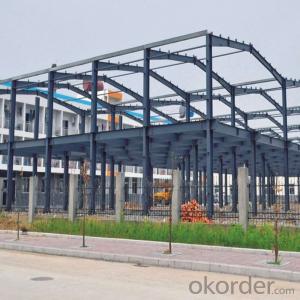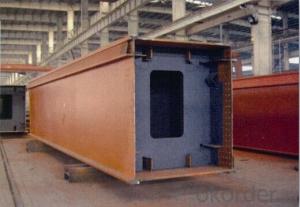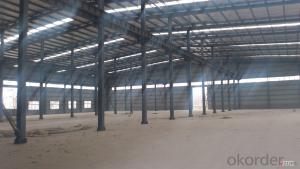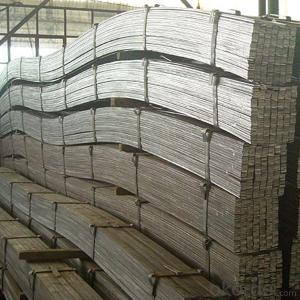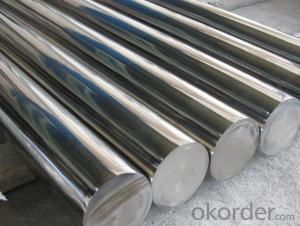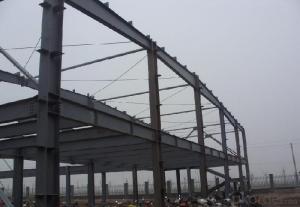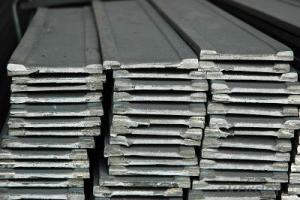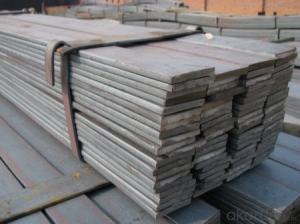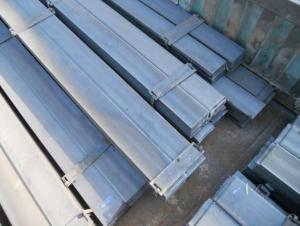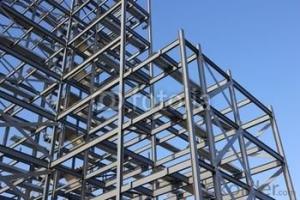11.08KG/M Steel flat bar for construction
- Loading Port:
- Tianjin
- Payment Terms:
- TT or LC
- Min Order Qty:
- 10000 m.t.
- Supply Capability:
- 10000 m.t./month
OKorder Service Pledge
OKorder Financial Service
You Might Also Like
Product Description:
OKorder is offering 11.08KG/M Steel flat bar for construction at great prices with worldwide shipping. Our supplier is a world-class manufacturer of steel, with our products utilized the world over. OKorder annually supplies products to European, North American and Asian markets. We provide quotations within 24 hours of receiving an inquiry and guarantee competitive prices.
Product Applications:
11.08KG/M Steel flat bar for construction are ideal for structural applications and are widely used in the construction of buildings and bridges, and the manufacturing, petrochemical, and transportation industries.
Product Advantages:
OKorder's 11.08KG/M Steel flat bar for construction are durable, strong, and resist corrosion.
Main Product Features:
· Premium quality
· Prompt delivery & seaworthy packing (30 days after receiving deposit)
· Corrosion resistance
· Can be recycled and reused
· Mill test certification
· Professional Service
· Competitive pricing
Product Specifications:
Specifications
1) . Easy to install, fire proof, good insulation
2). Certification: ISO9001:2000, SGS Standard.
Steel Structure Warehouse:
1.The steel structure of the connection method: welding connection
2.Steel structure design common norms are as follows: "Steel Design Code" (GB50017-2003) Cold-formed steel structure technical specifications" (GB50018-2002) "Construction Quality Acceptance of Steel" (GB50205-2001) "Technical Specification for welded steel structure" (JGJ81-2002, J218-2002) "Technical Specification for Steel Structures of Tall Buildings" (JGJ99-98)
3.The characteristics of steel Light weight steel structure Higher reliability of steel work Steel anti-vibration (earthquake), impact and good Steel structure for a higher degree of industrialization Steel can be assembled quickly and accurately Large steel interior space Likely to cause sealing structure Steel corrosive Poor fire-resistant steel Recyclable steel shorter duration
4.Commonly used steel grades and performance of steel Carbon
structural steel: Q195, Q215, Q235, Q255, Q275, etc.
High-strength low-alloy structural steel Quality carbon structural steel and alloy structural steel Special purpose steel Product Feature Carport, House, Office, Shop, Toilet, Villa, Warehouse, Workshop, Plant Other Information
Products have been all over the country more than 20 provinces, municipalities and autonomous regions, and have been exported to Europe, North America, the Middle East, Africa, Asia and other countries and regions, the widespread use
Welcome to our factory, we assure that our products will satisfy your needs with designs, competitive performance price ratio and best services.
FAQ:
Q1: Why buy Materials & Equipment from OKorder.com?
A1: All products offered byOKorder.com are carefully selected from China's most reliable manufacturing enterprises. Through its ISO certifications, OKorder.com adheres to the highest standards and a commitment to supply chain safety and customer satisfaction.
Q2: How do we guarantee the quality of our products?
A2: We have established an advanced quality management system which conducts strict quality tests at every step, from raw materials to the final product. At the same time, we provide extensive follow-up service assurances as required.
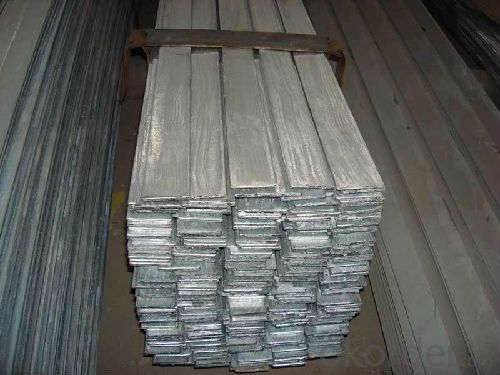
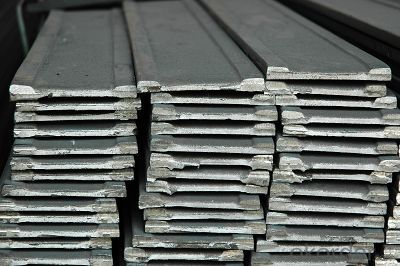
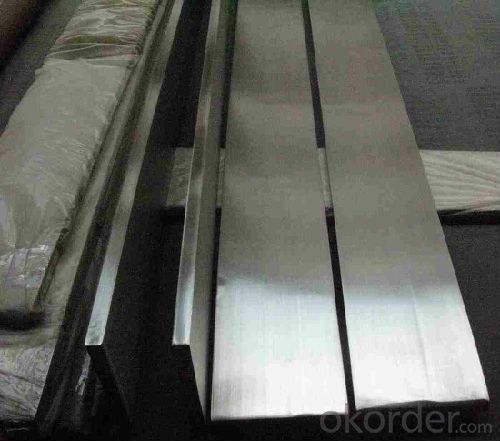
- Q: How are steel structures used in renewable energy projects (solar, wind, etc.)?
- Due to their exceptional strength, durability, and versatility, steel structures find extensive use in renewable energy projects such as solar and wind. These structures are crucial in providing support and stability for various components of these projects. In solar energy projects, steel structures are commonly employed to hold and support solar panels. To ensure maximum sunlight capture, the panels need to be positioned at an optimal angle, which steel frames allow for easy adjustment and alignment. Moreover, these structures safeguard the panels from harsh weather conditions, thus ensuring their longevity. Similarly, in wind energy projects, steel structures play a vital role in constructing wind turbines. The tower that holds the turbine is typically made of steel to withstand strong winds and manage the turbine's weight. Additionally, steel is used in constructing the turbine's nacelle, which houses important components like the generator. The strength and stability of steel guarantee the safe and efficient operation of wind turbines. Furthermore, steel structures are essential in other renewable energy projects such as hydroelectric dams and biomass power plants. In hydroelectric dams, steel is employed in constructing gates, penstocks, and turbines, which are crucial in converting the kinetic energy of flowing water into electricity. Similarly, in biomass power plants, steel structures are utilized in building boilers, storage tanks, and conveyors that facilitate the conversion of organic waste into energy. To summarize, steel structures are indispensable in renewable energy projects due to their support, durability, and versatility. They contribute to the reliability and longevity of these projects while aiding in the reduction of greenhouse gas emissions and combating climate change.
- Q: What are the common design considerations for steel roof structures?
- When designing steel roof structures, it is essential to take into account various common design considerations. These considerations encompass the following aspects: 1. Load capacity: The ability of steel roof structures to endure different loads, including dead loads, live loads, and environmental loads, without the risk of failure, must be carefully considered. 2. Span and spacing: The specific requirements of the building and the intended use of the roof determine the span and spacing of the steel roof structure. Adequate support and stability can be ensured by considering the desired clear span and spacing of the structural members. 3. Roof pitch: The pitch or slope of the roof significantly impacts the overall aesthetic appeal, drainage performance, and structural integrity of the roof. To prevent leaks and structural damage, the pitch must be determined carefully to avoid water pooling. 4. Roof covering: The design of the steel roof structure is influenced by the type of roof covering chosen, such as metal panels, shingles, or tiles. The weight and installation requirements of the selected roof covering must be accommodated in the design. 5. Thermal expansion and contraction: Temperature changes cause steel to expand and contract. To prevent stress and potential failure, the design should consider thermal movements and incorporate techniques like expansion joints or proper fastening systems. 6. Fire resistance: Meeting fire resistance requirements is crucial when designing steel roof structures. This may involve using fire-resistant materials or coatings and integrating fire protection systems like sprinklers. 7. Corrosion protection: Steel is susceptible to corrosion, particularly in outdoor or humid environments. To ensure the longevity and durability of the roof structure, appropriate corrosion protection measures such as protective coatings or galvanization must be incorporated into the design. 8. Accessibility and maintenance: The design should take into consideration the accessibility of the roof for maintenance purposes, such as cleaning or repair. Safe and easy access points and walkways can be included to facilitate ongoing maintenance and inspection of the roof structure. By considering these design considerations, engineers and architects can create steel roof structures that are not only safe and functional but also visually appealing, while meeting the specific requirements of the building and its occupants.
- Q: How are steel structures designed to be resistant to fire-induced thermal expansion?
- Steel structures are designed to be resistant to fire-induced thermal expansion through various measures. One of the key aspects of this design is the selection of materials that can withstand high temperatures. Steel, being a highly fire-resistant material, is commonly used in the construction of fire-resistant structures. In addition to material selection, the design includes the use of fire protection systems such as fireproof coatings and fire-resistant insulation. These systems are applied to the steel members to provide a protective layer, delaying the rise in temperature and preventing the steel from reaching its critical temperature, where it starts to lose its strength. Furthermore, steel structures are designed with expansion joints and thermal breaks to accommodate thermal expansion and contraction during a fire. Expansion joints allow the steel members to move freely without causing excessive stress, while thermal breaks are used to isolate different parts of the structure to minimize the transfer of heat. Another important design consideration is the structural analysis and calculation of the steel members. Engineers simulate various fire scenarios and determine the potential thermal loads that the structure may experience. This analysis helps in selecting appropriate steel sections and dimensions to ensure that the structure can withstand the expected thermal expansion without failure. Overall, steel structures are meticulously designed to resist fire-induced thermal expansion by using fire-resistant materials, implementing fire protection systems, incorporating expansion joints and thermal breaks, and conducting thorough structural analysis. These measures ensure that the structure can maintain its integrity and stability even in the event of a fire.
- Q: What are the considerations for aesthetic design in steel structures?
- Considerations for aesthetic design in steel structures include the choice of materials, the integration of architectural features, the use of color and finishes, as well as the overall visual appeal and coherence with the surrounding environment. Additionally, factors such as the building's purpose, site conditions, and budget constraints may also influence the aesthetic design choices.
- Q: How are steel structures designed and constructed to meet LEED certification requirements?
- There are several strategies and practices that can be utilized to design and construct steel structures in order to meet the requirements for LEED certification. Here are some key elements to consider: 1. Material Selection: Steel is an incredibly sustainable material as it is highly durable, recyclable, and generates minimal waste during manufacturing. Incorporating recycled or locally sourced steel can earn LEED points in the Materials and Resources category. 2. Energy Efficiency: Steel structures can be equipped with energy-efficient features, such as high-performance insulation, efficient HVAC systems, and advanced lighting controls. These additions help to reduce energy consumption and can earn points in the Energy and Atmosphere category. 3. Indoor Environmental Quality: Steel structures can enhance the quality of the indoor environment by incorporating proper ventilation, utilizing natural light, and utilizing low-emitting materials. These elements improve air quality and occupant comfort, resulting in points in the Indoor Environmental Quality category. 4. Water Efficiency: Steel structures can be designed to include water-efficient fixtures, rainwater collection systems, and efficient irrigation systems. These strategies help conserve water and can earn points in the Water Efficiency category. 5. Sustainable Site Design: Steel structures can be designed in a way that minimizes their impact on the environment. Strategies such as stormwater management, heat island reduction, and preservation of open spaces contribute to points in the Sustainable Sites category. 6. Construction Waste Management: Proper management of construction waste is vital to achieving LEED certification. Steel structures inherently generate less waste during construction, and implementing strategies like waste sorting and recycling can earn points in the Materials and Resources category. 7. Innovation: Implementing innovative design and construction techniques, such as modular construction or advanced technologies, can further enhance the sustainability of steel structures. These innovations can earn points in the Innovation category. It's important to note that achieving LEED certification requires a comprehensive approach to design and construction. Engaging experienced professionals with LEED expertise, such as architects, engineers, and contractors, is essential to ensure the effective implementation of all necessary strategies and practices to achieve the desired certification level.
- Q: How do steel structures resist loads such as gravity, wind, and seismic forces?
- Steel structures resist loads such as gravity, wind, and seismic forces due to the inherent properties of steel. Its high strength-to-weight ratio allows steel structures to efficiently support heavy gravity loads. Additionally, steel's flexibility and ductility enable it to absorb and dissipate energy during wind and seismic events, minimizing damage. The use of bracing systems, bolted connections, and proper design techniques further enhance the structural integrity, ensuring steel structures can withstand these various forces.
- Q: Can steel structures be designed with rainwater harvesting systems?
- Yes, steel structures can be designed with rainwater harvesting systems. Rainwater harvesting systems can be incorporated into steel structures by adding gutters, downspouts, and storage tanks to collect and store rainwater. The steel structure can provide a sturdy framework to support the necessary components of the rainwater harvesting system.
- Q: What are the design considerations for steel storage buildings?
- Some of the key design considerations for steel storage buildings include the structural integrity of the building, ensuring it can withstand heavy loads and adverse weather conditions. Additionally, factors such as the layout and size of the storage space, accessibility for loading and unloading, as well as fire safety measures, ventilation, and insulation requirements, need to be taken into account. The design should also consider any specific needs of the stored items, such as temperature control or security.
- Q: How do steel structures handle differential settlement?
- Steel structures are designed to handle differential settlement through their inherent flexibility and ductility. When differential settlement occurs, the steel members can absorb and distribute the uneven loads, minimizing the impact on the overall structure. Additionally, steel structures can be designed with appropriate connections and supports that allow for movement and adjustment, ensuring stability and preventing any significant structural damage.
- Q: How do steel structures provide efficient use of space?
- Steel structures provide efficient use of space due to their high strength-to-weight ratio. This allows for the construction of slender columns and beams, maximizing the usable floor area. Additionally, steel structures can span large distances without the need for intermediate supports, further optimizing space utilization. The versatility of steel also allows for creative designs, such as open floor plans and flexible layouts, resulting in efficient and adaptable use of the available space.
Send your message to us
11.08KG/M Steel flat bar for construction
- Loading Port:
- Tianjin
- Payment Terms:
- TT or LC
- Min Order Qty:
- 10000 m.t.
- Supply Capability:
- 10000 m.t./month
OKorder Service Pledge
OKorder Financial Service
Similar products
Hot products
Hot Searches
Related keywords
